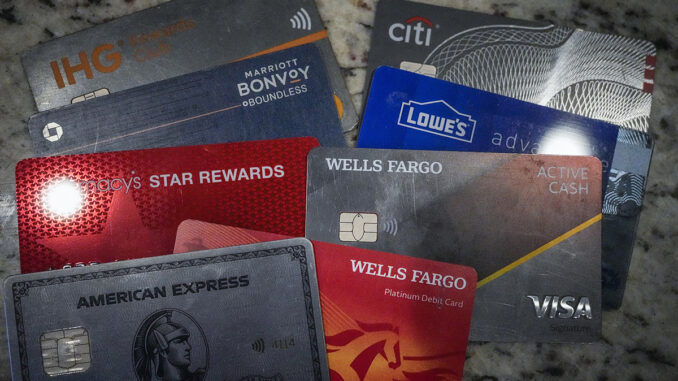

NEW YORK — Seriously overdue credit card debt is at the highest level in over a decade, and people 35 and under struggle more than other age groups to pay their bills.
The share of credit card debt that’s severely delinquent, defined as being more than 90 days overdue, rose to 10.7% during the first quarter of 2024, according to the Federal Reserve Bank of New York. A year ago, just 8.2% of credit card debt was severely delinquent.
Bruce McClary, senior vice president at the National Foundation for Credit Counseling, says anyone at risk of delinquency should contact a nonprofit credit counselor as soon as possible. Some of these counselors can be found through his organization. The consultation is free; a nonjudgmental counselor can guide a long-term solution.
McClary said nonprofits can also help create debt management plans with lower interest rates, no late fees and a single monthly payment. These plans may come with maintenance fees, which vary, but the overall savings on the debt offset the fees. McClary urged borrowers to be careful of scammers and for-profit debt consolidation companies, which often charge much higher fees than nonprofit organizations. The Consumer Financial Protection Bureau has a helpful breakdown comparing the two.
Martin Lynch, president of the Financial Counseling Association of America, echoed this advice.
“Taking that first step and contacting a counselor is difficult for many people,” Lynch said. He emphasized that consumers in debt should do their best to “first relax” and be as forthcoming as possible about their circumstances with the counselor.
“You’ll be talking to someone for free who will listen to you describe your situation,” he said. “You can share your concerns without being judged for falling into difficulty.”
Lynch and McClary urge borrowers to contact credit card companies directly to negotiate interest rates, fees and long-term payment plans. They note that it’s in the companies’ best interests to pay before the debt goes into collections. “The best thing to do is to reach out, give an honest assessment of your ability to pay over time, and ask what options are available to you both ‘on and off-the-menu,’” McClary said. He said this kind of phrasing can give creditors an opening to offer more flexibility. McClary and other experts stress that most credit card companies and lenders have hardship programs for cases like these. Such options gained visibility during the COVID-19 pandemic when more companies publicly advertised that consumers facing difficulty may skip or defer payments without penalties.
According to LendingTree, the average annual interest rate on a new credit card is 24.71%, the highest since the company began tracking in 2019. That’s partly because the Federal Reserve has raised its key interest rate to a 23-year high to combat the highest inflation in four decades, which peaked at 9.1% in June 2022.
Simultaneously, pandemic-era aid such as stimulus payments, the child tax credit, increased unemployment benefits and a moratorium on student loan payments has ended. Wage gains haven’t all kept up with inflation, which hits lower-income consumers harder, and rent increases have eaten into savings some consumers may have built up during the early years of the pandemic.
Silvio Tavares, CEO of VantageScore, a credit score modeling and analytics company, said that delinquencies have now exceeded their pre-pandemic levels and that renters are especially vulnerable to falling behind. “Younger and less affluent people are experiencing challenges,” he said, and high interest rates affect them. Tavares said the most important thing a borrower can do is to know their credit score and keep up with payments to avoid paying additional interest on revolving balances and debt. He cautioned consumers not to over-extend themselves with “buy now, pay later” loans, which are increasingly available “at every checkout.”
According to a Bank of America Global Research report, credit cards only make up about 6.5% of consumer debt, but the increase in delinquencies appears to be outpacing income growth.
According to McClary, there’s also likely a large group of consumers paying minimum balances and staying out of delinquency for now but who are too financially stressed to pay their balances in full. He said that worsening the economy could push those consumers into severe delinquency.



